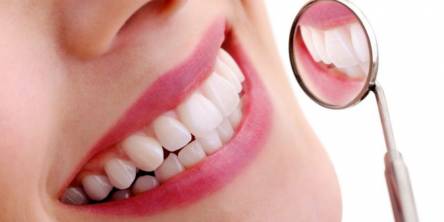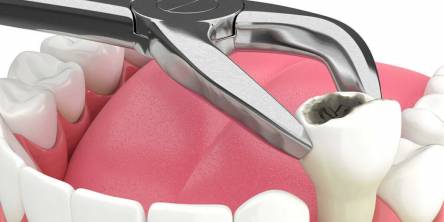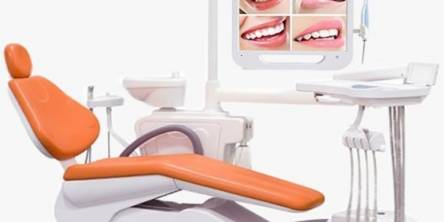6 Common Oral Issues That Are Caused by Poor Oral Hygiene

Maintaining proper oral hygiene is extremely important to keep your teeth and gums healthy. However, many people neglect proper tooth brushing and flossing. This can result in certain conditions that can affect your oral cavity. In this article, we have gathered six common oral issues that are caused by poor oral hygiene.
1. Tooth decay
Tooth decay, also known as caries and cavities, is a condition in which a hole occurs in the tooth. But the truth is that this hole can't develop on its own. It occurs when acids soften and eat away your tooth enamel. These acids are produced by bacteria that inhabit your oral cavity. So if you don't brush and floss your teeth properly, the number of bacteria in your mouth increases dramatically. To remove any bacteria from your mouth, you need to brush your teeth twice a day and use dental floss daily.
2. Bad breath
Bad breath, also called halitosis, is an extremely common issue that can be caused by many factors. The most common of them include the consumption of alcoholic drinks and smelly foods, problems with digestion, smoking, poor oral hygiene, and certain oral issues. As mentioned above, your mouth is full of bacteria. During their vital activity, these bacteria produce an unpleasant odor. Additionally, food particles can get stuck between your teeth and also cause bad breath.
3. Gum recession
Gum recession is a condition that occurs when your gums shrink and expose the roots of the tooth. This condition can lead to increased tooth sensitivity since the parts that become exposed are less protected. The most common causes of gum recession include poor oral hygiene, tobacco, and recreational drug use, aggressive tooth brushing, vitamin C deficiency, and gum disease. If left untreated, your teeth may completely lose their support and fall out. That's why it is essential to visit a dentist if you have receding gums.
4. Gum disease
Gum disease is a condition in which the bacteria overgrowth makes your gums infected and inflamed. The most common symptoms of gum disease are gum redness, swelling and bleeding, receding gums, gum pockets, loose teeth, pus between the teeth, and bad breath. Poor oral hygiene is deemed the most common cause of gum disease. However, there are certain risk factors like smoking, heredity, diabetes, and poor nutrition that can increase your chances of developing gum disease.
5. Enamel wear
Even though tooth enamel is deemed the hardest tissue in the human body, there are some factors that can make it wear out. With age, tooth enamel can become thinner. However, poor oral hygiene, aggressive tooth brushing, teeth grinding, and increased consumption of acidic foods and drinks can remove your tooth enamel. Symptoms of enamel wear include increased tooth sensitivity, chipped tooth enamel, and yellowish teeth. It is essential to cover the damaged teeth to ease your symptoms and prevent further wear out.
6. Tartar accumulation
Tartar is a solid deposit that occurs between the teeth or near the gum line when dental plaque hardens. In most cases, tartar develops when people don't maintain proper oral hygiene. However, smoking can also increase your risk of getting tartar. In addition to aesthetic issues, tartar accumulation can contribute to the development of gum disease since it creates a perfect environment for bacteria to live and multiply.
The bottom line
Indeed, poor oral hygiene can significantly affect your oral cavity. But you should also know that bacteria overgrowth in your mouth can also increase your risk of getting respiratory infections, diabetes type 2, Alzheimer's disease, stroke, and heart attack. Brushing your teeth in the morning and in the evening as well as using dental floss can help decrease the number of bacteria in your mouth and prevent the development of the aforementioned issues.
Similar Articles
The results of wearing Invisalign aligners look stunning, and they are way more convenient than traditional braces. However, no one speaks about what it feels like to wear the same pair of traces around 22 hours a day
Temporomandibular Joint Disorder, commonly known as TMJ, is a condition that causes pain and dysfunction in the jaw joint and surrounding muscles. This disorder can arise from various factors, including teeth grinding, arthritis, jaw injuries, poor posture, or stress.
A root canal is a common treatment that people pay the dentist a visit for. According to a study, root canal treatment claims were up by 42% in the last five years.
Family dentistry isn’t just about teeth—it’s about bringing convenience, care, and a few laughs to your household’s dental game. Think of a family dentist as the Swiss Army knife of oral healthcare, equipped to handle everything from baby teeth to grandma’s bridgework.
Early identification of dental decay is critical. It can aid your dentist in reversing the problem by administering proper therapy. However, the early stages of tooth decay are almost impossible to detect with the human eye.
Cosmetic dentistry is a branch of dental practice that focuses on improving the appearance of teeth, smiles, and overall oral health. This field of dentistry has grown significantly over the past few decades and offers patients a wide variety of procedures to address a wide variety of cosmetic issues.
Ah, the bittersweet moment when a tooth has overstayed its welcome. It’s been with you through thick and thin—chewing your favorite snacks, smiling in photos, and grinding during those stressful nights. But now, it’s time to part ways
Learn 5 signs you may need dentures and discover the steps to get started for a healthier smile and improved quality of life.
Boost patient trust and diagnostic accuracy with high-quality intraoral cameras. Enhance care, improve communication, and streamline operations in your dental practice!









